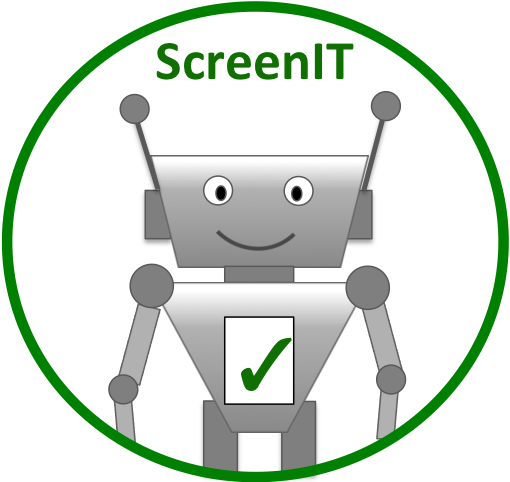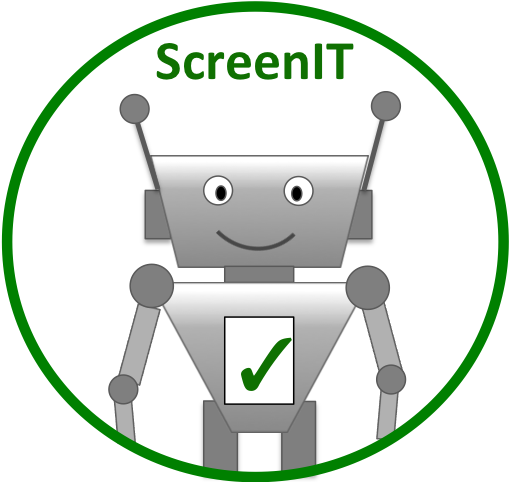Saliva or Nasopharyngeal Swab Specimens for Detection of SARS-CoV-2
This article has been Reviewed by the following groups
Discuss this preprint
Start a discussion What are Sciety discussions?Listed in
- Evaluated articles (ScreenIT)
Abstract
Article activity feed
-

SciScore for 10.1101/2020.04.16.20067835: (What is this?)
Please note, not all rigor criteria are appropriate for all manuscripts.
Table 1: Rigor
Institutional Review Board Statement Consent: Demographics, clinical data and samples were only collected after the study participant had acknowledged that they had understood the study protocol and signed the informed consent. Randomization not detected. Blinding not detected. Power Analysis not detected. Sex as a biological variable not detected. Table 2: Resources
No key resources detected.
Results from OddPub: We did not detect open data. We also did not detect open code. Researchers are encouraged to share open data when possible (see Nature blog).
Results from LimitationRecognizer: We detected the following sentences addressing limitations in the study:As SARS-CoV-2 viral loads differ between mild and …
SciScore for 10.1101/2020.04.16.20067835: (What is this?)
Please note, not all rigor criteria are appropriate for all manuscripts.
Table 1: Rigor
Institutional Review Board Statement Consent: Demographics, clinical data and samples were only collected after the study participant had acknowledged that they had understood the study protocol and signed the informed consent. Randomization not detected. Blinding not detected. Power Analysis not detected. Sex as a biological variable not detected. Table 2: Resources
No key resources detected.
Results from OddPub: We did not detect open data. We also did not detect open code. Researchers are encouraged to share open data when possible (see Nature blog).
Results from LimitationRecognizer: We detected the following sentences addressing limitations in the study:As SARS-CoV-2 viral loads differ between mild and severe cases17, a limitation of our study is the primary focus on COVID-19 inpatients, many with severe disease. While more data are required to more rigorously compare the efficacy of saliva in the hospital setting to earlier in the course of infection, findings from two recent studies support its potential for detecting SARS-CoV-2 from both asymptomatic individuals and outpatients13,18. As infectious virus has been detected from the saliva of COVID-19 patients12, ascertaining the relationship between virus genome copies and infectious virus particles in the saliva of pre-symptomatic individuals19 will play a key role in understanding the dynamics of asymptomatic transmission1,20. Stemming from the promising results for SARS-CoV-2 detection in asymptomatic individuals13, a saliva SARS-CoV-2 detection assay has already gained approval through the U.S. Food and Drug Administration emergency use authorization18. To meet the growing testing demands, however, our findings support the need for immediate validation and implementation of saliva for SARS-CoV-2 diagnostics in certified clinical laboratories.
Results from TrialIdentifier: No clinical trial numbers were referenced.
Results from Barzooka: We did not find any issues relating to the usage of bar graphs.
Results from JetFighter: We did not find any issues relating to colormaps.
Results from rtransparent:- Thank you for including a conflict of interest statement. Authors are encouraged to include this statement when submitting to a journal.
- Thank you for including a funding statement. Authors are encouraged to include this statement when submitting to a journal.
- No protocol registration statement was detected.
-
-

SciScore for 10.1101/2020.04.16.20067835: (What is this?)
Please note, not all rigor criteria are appropriate for all manuscripts.
Table 1: Rigor
Institutional Review Board Statement Demographics , clinical data and samples were only collected after the study participant had acknowledged that they had understood the study protocol and signed the informed consent . Randomization not detected. Blinding not detected. Power Analysis not detected. Sex as a biological variable Healthcare worker cohort All study participants ( n=98 ) Participants with matching samples ( n=33 ) Gender , male 16 ( 16 % ) 5 ( 15 % ) Age range , years ( average ) 22-67 ( 36 Table 2: Resources
Software and Algorithms Sentences Resources Statistical analysis Statistical analyses were conducted in GraphPad Prism 8.0.0 as described in the Results. …SciScore for 10.1101/2020.04.16.20067835: (What is this?)
Please note, not all rigor criteria are appropriate for all manuscripts.
Table 1: Rigor
Institutional Review Board Statement Demographics , clinical data and samples were only collected after the study participant had acknowledged that they had understood the study protocol and signed the informed consent . Randomization not detected. Blinding not detected. Power Analysis not detected. Sex as a biological variable Healthcare worker cohort All study participants ( n=98 ) Participants with matching samples ( n=33 ) Gender , male 16 ( 16 % ) 5 ( 15 % ) Age range , years ( average ) 22-67 ( 36 Table 2: Resources
Software and Algorithms Sentences Resources Statistical analysis Statistical analyses were conducted in GraphPad Prism 8.0.0 as described in the Results. GraphPad Prismsuggested: (GraphPad Prism, SCR_002798)Results from OddPub: We did not detect open data. We also did not detect open code. Researchers are encouraged to share open data when possible (see Nature blog).
About SciScore
SciScore is an automated tool that is designed to assist expert reviewers by finding and presenting formulaic information scattered throughout a paper in a standard, easy to digest format. SciScore is not a substitute for expert review. SciScore checks for the presence and correctness of RRIDs (research resource identifiers) in the manuscript, and detects sentences that appear to be missing RRIDs. SciScore also checks to make sure that rigor criteria are addressed by authors. It does this by detecting sentences that discuss criteria such as blinding or power analysis. SciScore does not guarantee that the rigor criteria that it detects are appropriate for the particular study. Instead it assists authors, editors, and reviewers by drawing attention to sections of the manuscript that contain or should contain various rigor criteria and key resources. For details on the results shown here, including references cited, please follow this link.
-

